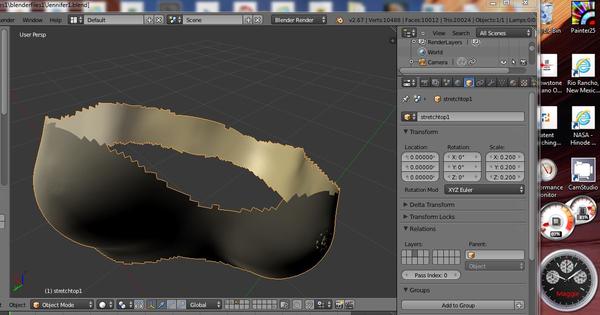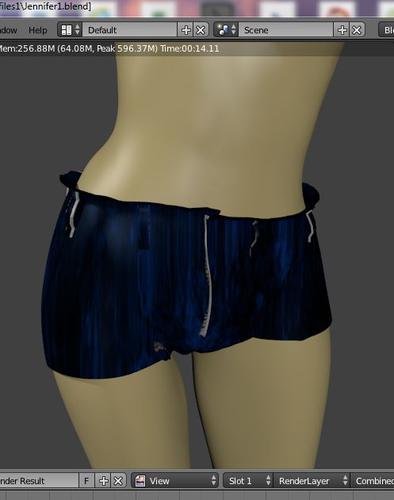Questions about the DAZ Studio 4.5+ EULA
 drcharbonneau
Posts: 0
drcharbonneau
Posts: 0
When first reading the EULA the area that seemed most vague was in the copyrights meaning. This has actually spawned an interjected, off topic consideration in another thread, so it seemed a thread here might be able to clear up any questions, such as mine about what DAZ expects from the user.
The impression I interpreted from the EULA about using the work I made was that (paraphrased of course) the Genesis meshes "as is" or items of content from DAZ, used without modification, carry the DAZ copyright, thus my work would subject to royalties, possibly, but certainly subject to my giving them credit for the character(s). On the other hand, work that has merely used the software to produce an object, modified beyond what would define it as Genesis or a preset, that work would not be subject to copyrights. I want to be certain I am understanding that correctly.
What brought this subject up, was the possibility of exporting a DAZ Studio created figure object, then using another program to duplicate a portion of the mesh, then modify it to become a garment. I was told I can't do this and that even that surface data, essentially, carries the DAZ "ownership" with it. I was told I could not offer such an item in the DAZ store.
My intended use for all modeling and rendering software I use, is to create illustrations; not to sell objects or figures in anyone's store. My thoughts are to one day purchase and learn Cararra, but certainly not if anything I create in it is bound to a EULA copyright, nor till I learn Blender well enough to render wild scenes there (pretty much can already) and to bring those characters into DAZ Studio, rig and animate them.
Grumbacher or Windsor & Newton don't demand royalties or credit for the paintings I make on canvases bought by them any more than Strathmore or Prismacolor. If I paste my label over theirs and sell the art supplies as my brand, then I'm in the wrong. If I photocopy their logo and use it as a theme for my work without giving them credit at least, I'm in the wrong. If I paint or draw on a sheet of their paper and claim that work as mine, giving zero credit to what kind of paper I used, I'm within all ethical boundaries. If I wish to conceal their watermark, I'm still within all copying rights, ethics and owe them nothing.
I simply want to know what I agreed to before going any further to learn, recommend or otherwise use DAZ Studio 4.5pro.
Am I doing a "no-no" by using Jennifer's (character object name) mesh to create the clothes?






Comments
Renders and animations are yours, the mesh is theirs. You cannot legally use any portion of their mesh in a modelling app to cut into it and form another product with intent to distribute . Means of auto retopology and shrinkwrapping are also a no-go. Personal use is another issue. If you modify their mesh, it is to stay on your own pc.
If you build a mesh from the ground up, you would own that just as they own theirs.
Yes, as said, It is not allowed to use any mesh for redistribution, as outlined in section #E of the EULA
If it is for personal use and never to leave your computer, don't worry about it. When it comes to mesh, you cannot use a single vertice from an existing DAZ or vendor product for anything that will leave your PC, that should be common sense IMO. There are specific licenses for game use, but i doubt these give the rights to make derivative works.
If you want to use analogies, think of the canvas and the paper as merchant resources here at DAZ, they are sold with the intention of modifying for further commercial use, the base figures and addons are not.
If you want to learn modeling of clothes, it's best to start from scratch.
Would you go to the Louve and cut into the Venus de Milo or claim you sculpt it? Probably not.
If, as you state, your intended use is to make illustrations/renders then what you do with the mesh should have no impact. The output of the rendering engine is yours to do with as you choose. The inputs to that rendering engine belong to their respective rights holders and may or may not be yours to do with as you please.
Also, one thing to note is many items available for use in your renders may carry copyright restrictions that don't allow them to be used for commercial renders. Mostly these are the free products but it's something to be aware of if you intend to sell your renders.
I think this pretty much covers what I thought. I can safely make renderings from the basic Genesis stock without violating any usage terms.
As for the gallery comment, I believe the launch post covered that analogy. If I was a man as unethical or criminal as to do such, I likely wouldn't be asking queries on a subject like this. The question was not posed about copyrights on modeled meshes, but concerns renderings of characters I create using DAZ.
What I gather from Chohole's post, I'm okay doing renderings. I'm glad I know now about the products from individual modelers/renderists that could have some surprises.
If you have questions, the best advice is to contact DAZ and get clarification in writing.
If you want to contact DAZ then just open a support tick and ask your questions.
If you want to refresh yourself on the exact terms of the EULA then you can find it here http://www.daz3d.com/eula
I think Chohole's excerpt cleared up what I was questioning.
Now this might be a turn on the query, though. Let's say I create something in Hex or Blender or even some software I write, then bring it into DAZ and rig it, add morphs, weight maps, materials et al, then want to join DAZ for pay. If I put my something in the DAZ store, who owns the copyrights?
Assuming you are a DAZ PA and selling at DAZ 3D as a brokered artist, then you own the copyright of anything you create.
I think I can work with that. As long as I can stretch and squish Genesis into what I want, then use that mesh pretty much freely to make renderings from which the mesh cannot be extracted, I'll be a happy man for the most part. My sense of ethics has the little angel on my right shoulder reminding me that somewhere, especially if those illustrations become gainful, I should make a purchase from DAZ. At this point, I'm imagining it will be some of the add-ons like a "hair magic machine" and probably Carrara. Also I foresee possibly becoming a paying member, as in premium. In the meantime, I'm up and running with Blender. (Yes, I refurbish my estimation that by fall I'll grace the communities that be with some horses and likely other animal objects through Blender... barring, of course, any calamity.)
The question that comes up now involves the DAZ forums and my reason for being here; meaning "Is there one?" Are there people here who, like me, currently just want to make renderings for some purpose and would like a tutorial on how to make garments with this method Patience55 describes as "topological?"
http://jootbox.forumchitchat.com/post/Base-Meshes-Creating-a-Seed-for-Modeling-Trees-6365224?trail=15#1
...or for instance making trees with Blender? Leaves et al. As for using DAZ Studio, I could likely produce a reasonably decent tut on using the d-formers and converting them to morphs. (I have a Genesis that allows for breast enhancement et al, since the characters in my novel
http://jootbox.forumchitchat.com/post/The-Time-Machine-5878567?trail=15#2
often are mentioned as being VERY ample endowments...) I personally feel cheated if home-room angel doesn't come complete. I feel as if I'm cheating someone else if I conveniently substitute androgynous for truth. I'm a hard-edge realist. If I weren't, why would I be concerned about the perfection of CG to begin with?
Another question, more technical, is about Carrara. If I learn to rig, weight map, etc. in DS, will all this effort need be learned again and re-worked for Carrara? Same for the hair add-ons?
This thought just came up because I've been adding a plethora of morphs to Genesis. Can I share a package of these morphs? Perhaps in the freepository?
Are the morphs your own created morphs, or are they simply combinations made using the morph packages that are available for Genesis?
These are my own pristine spawned morphs created by using the d-formers, then saving as morph assets to the Genesis.
Yes, you can share those. You need the fiels in \Data\DAZ 3D\Genesis\Base\Morphs\YourName\YourProduct, where YourName and YourProduct are what you entered when saving them as morph assets (if you have - if not, File>Save as>Support Asset>Morph Asset), which will be in the content directory you had selected as base path in the save options dialogue. If you set the base path to an otherwise empty folder (which has to be set as a DAZ Studio format content directory) then all you need to do is add a readme and zip the whole thing up.
Cool! It'll be a bit before the whole shebang is ready to share, but so far I've added quite a few sliders in the morph parameters that allow Genesis to be "all he/she can be." Some things will need to reworked in Hex or Blender, etc., such as nipples, but the teat areas can be given a bit of spherical appearance. Other morphs, for instance symphatic procession or recession (underbite/overbite) are already done and working well.
When I finally get the package together, is it best to include tuts (and likely a glossary) with the zip or start a thread or maybe both?
Both, if you have the patience, since not everyone reads the forums but on the other hand the forums make it easier to answer questions.
I imagine it's more of a tit for tat situation. People answer my queries. If I learn something that might help make life easier for fellow renderists, as a doctor, I'm really obligated to pass on the knowledge. (Doctor intrinsically means "teacher.") I do most of my graphics work in the mornings, while the rest of my day is devoted to research and other projects, so it'll take me some time to get a meaningful repertoire together, albeit not years...
This is more of a programming extension to this discussion, but it applies. How can DAZ or a designer ever truly prove that a mesh was theirs? Some programs have a built in footprint that goes along with any derivative work. I would think, though, that a program creating meshes would want to be as free of added data as possible. The reason I'm asking is it appears that to do something I want to for totally different commercial reasons, in the future, I'll need to write a mesh generator from scratch so I can provide a viewer, sort of like Acrobat provides its Reader, only with some real time selection capability.
Wouldn't putting such a footprint attached to each vert reeeaaalllly add to the memory overhead?